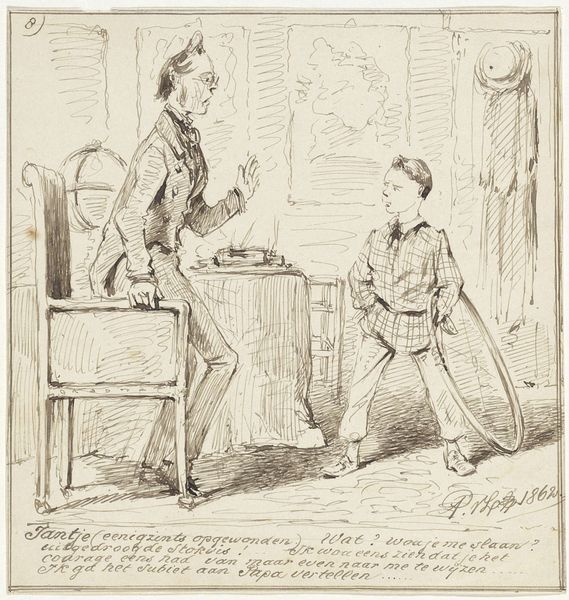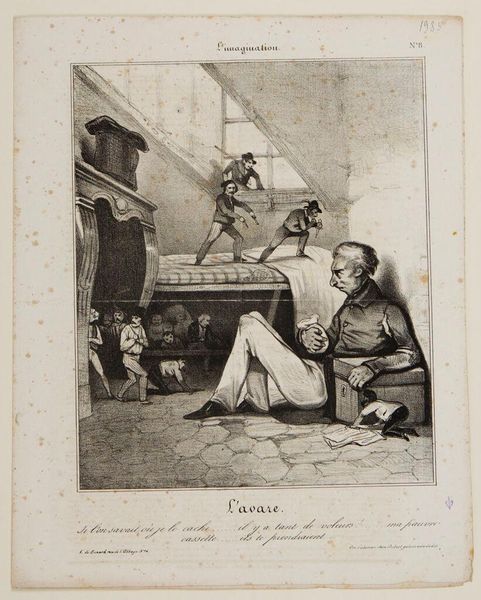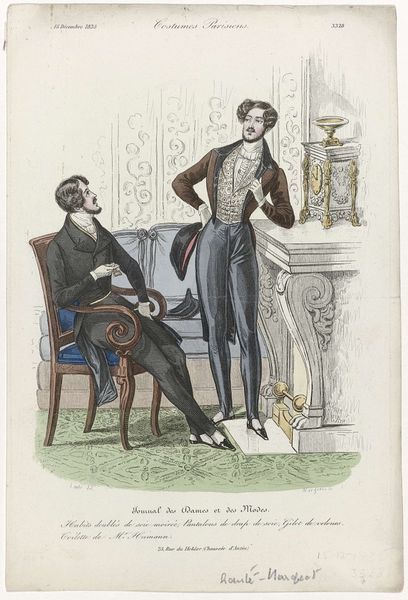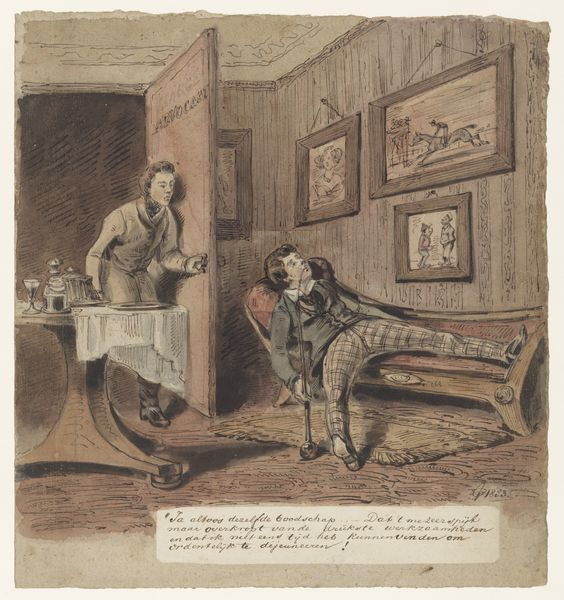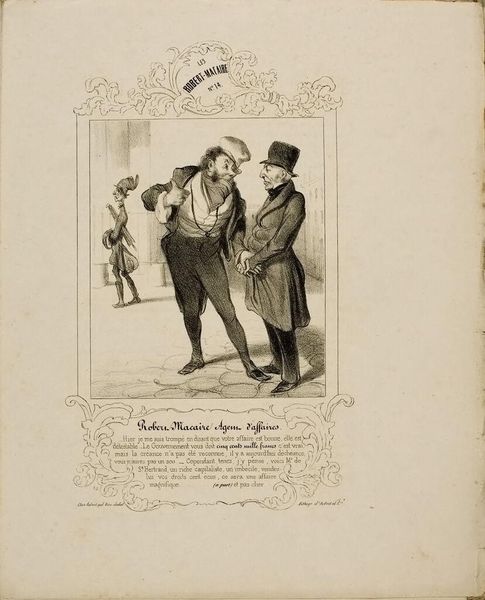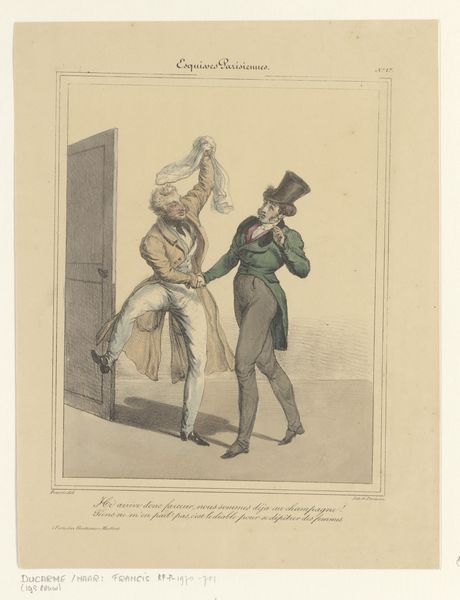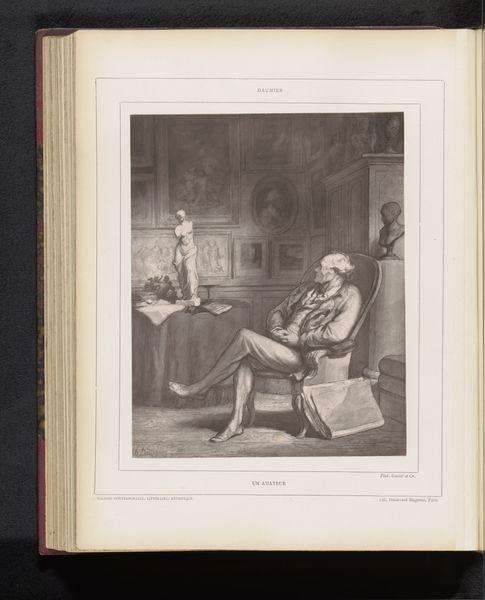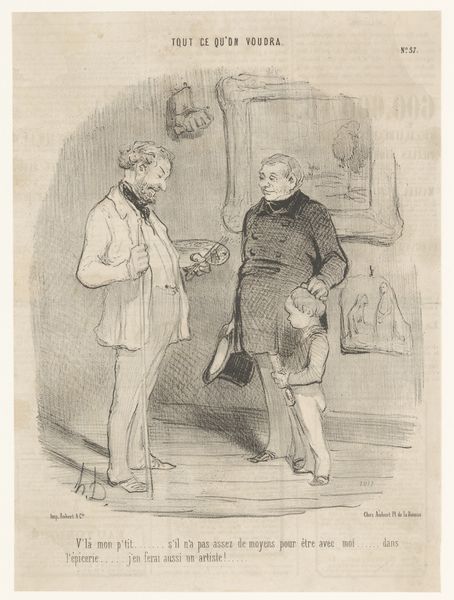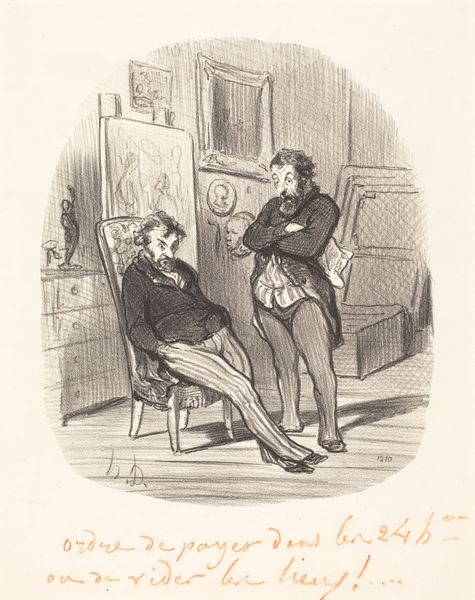
"'The unwelcome hints of Mr. Shepherd, his Agent,' Chapter I" frontispiece for Jane Austen's Persuasion 1898
0:00
0:00
drawing, painting, print, watercolor, ink
#
drawing
#
painting
# print
#
watercolor
#
ink
#
genre-painting
Dimensions: 298 × 222 mm
Copyright: Public Domain
Editor: So, this is "The unwelcome hints of Mr. Shepherd, his Agent," Chapter I frontispiece, by Charles Edmund Brock, dated 1898. It looks like a watercolor and ink drawing. It has this delicate, almost humorous feel, despite what sounds like an awkward situation in the title. What strikes you when you look at this? Curator: What immediately comes to mind is the social commentary inherent in illustration. This was created for a popular novel, placing it firmly within a commercial, widely consumed visual culture. We must consider the power dynamics it reflects. Look at the postures: the erect stance of the presumed gentleman versus the seated, perhaps servile, agent. Consider also the visual markers of class and occupation—the clothing, the setting of a well-appointed room versus a work space. To what extent does Brock reinforce or subtly critique these hierarchies? Editor: That’s interesting, the reinforcement versus critique. I see how their body language kind of tells a story beyond just the words. The agent looks almost…cornered? Does that make sense given the time this was made? Curator: Absolutely. This was a period of great social upheaval and shifting class structures in Britain. Illustration played a vital role in shaping and reflecting anxieties about these changes. Ask yourself, who was Brock’s intended audience? How would they have interpreted these "unwelcome hints," and how does this artwork either reassure or unsettle their existing social perceptions? Also, the image accompanies the text - is Brock illustrating or interpreting Austen? Editor: Okay, I see the work functioning almost as a conversation starter about society at the time. So, by unpacking this image, we can actually dig into some heavier topics about social change. I wouldn't have picked that up initially just looking at the colors and style. Thanks! Curator: Precisely. The apparent simplicity of illustration can mask its profound engagement with the politics of representation. Remember, visual culture *is* social history.
Comments
No comments
Be the first to comment and join the conversation on the ultimate creative platform.
